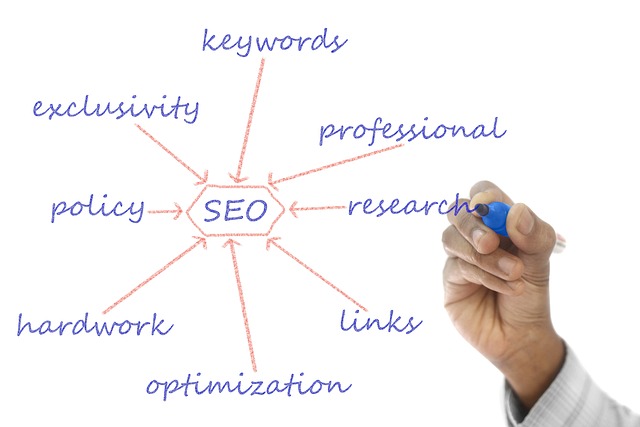Boost Your Website’s Ranking on Google

Search Engine Optimization (SEO) is the process of enhancing a website to improve its visibility in search engine results pages (SERPs). When your website ranks higher in search results, it becomes more accessible to potential visitors, driving traffic and increasing the likelihood of conversions. This comprehensive guide will walk you through the step-by-step process of SEO, including keyword research, ranking strategies, and effective tools to use.
For more information and knowledge you can enroll in this online video course SEO Marketing (How To Use SEO to Get High-Quality Targeted Traffic)
Understanding SEO
SEO involves optimizing various elements of your website to improve its ranking on search engines like Google. The goal is to make your site more attractive to search engines so that it appears higher in search results for relevant queries. This involves both on-page and off-page strategies, technical optimization, and continuous monitoring and adjustments.

Step-by-Step SEO Process
Step 1: Website Audit

A comprehensive website audit is the first step in any SEO campaign. This helps you identify the strengths, weaknesses, and areas for improvement on your site.
Key Actions:
- Check for broken links: Use tools like Screaming Frog or Google Search Console.
- Analyze site speed: Use Google PageSpeed Insights to identify performance issues.
- Evaluate mobile-friendliness: Ensure your site is responsive and performs well on mobile devices.
- Review on-page SEO: Check titles, meta descriptions, headers, and keyword usage.
- Assess content quality: Ensure your content is relevant, informative, and engaging.

Step 2: On-Page SEO
On-page SEO involves optimizing individual pages on your website to improve their search engine rankings.
Key Actions:
- Optimize title tags: Include primary keywords and keep titles under 60 characters.
- Write compelling meta descriptions: Summarize the page content and include relevant keywords.
- Use header tags (H1, H2, H3): Organize content and include keywords in headers.
- Optimize images: Use descriptive file names and alt text, and compress images for faster loading.
- Improve URL structure: Use clean, descriptive URLs with keywords.
- Internal linking: Link to other relevant pages on your site to enhance navigation and authority.
Step 3: Off-Page SEO
Off-page SEO involves activities outside your website that can influence your rankings, primarily through building backlinks.
Key Actions:
- Build high-quality backlinks: Focus on acquiring links from reputable, relevant sites.
- Engage in social media marketing: Share your content on social media to drive traffic and engagement.
- Guest blogging: Write articles for other websites to gain exposure and backlinks.
- Influencer outreach: Collaborate with influencers in your industry to promote your content.
Step 4: Technical SEO

Technical SEO ensures that your website meets the technical requirements of search engines for crawling and indexing.
Key Actions:
- Improve site speed: Optimize images, leverage browser caching, and minimize CSS and JavaScript.
- Ensure mobile-friendliness: Use responsive design and optimize for mobile performance.
- Create an XML sitemap: Submit it to search engines to help them understand your site structure.
- Fix crawl errors: Use Google Search Console to identify and fix errors.
- Use HTTPS: Ensure your site is secure with an SSL certificate.
Step 5: Content Creation

High-quality, relevant content is essential for SEO. It helps attract visitors, earn backlinks, and engage your audience.
Key Actions:
- Create valuable content: Write in-depth, informative articles that address your audience’s needs.
- Use keywords naturally: Incorporate keywords without keyword stuffing.
- Update content regularly: Keep your content fresh and up-to-date.
- Create diverse content types: Include blogs, videos, infographics, and podcasts.
Step 6: Monitoring and Analysis
Continuous monitoring and analysis are crucial for understanding the effectiveness of your SEO efforts and making necessary adjustments.
Key Actions:
- Use Google Analytics: Track website traffic, user behavior, and conversions.
- Monitor rankings: Use tools like Ahrefs, SEMrush, or Moz to track keyword rankings.
- Analyze backlinks: Use tools to monitor your backlink profile and identify new opportunities.
- Adjust strategies: Based on your analysis, refine your SEO strategies for better performance.
How to Research Effective Keywords

Effective keyword research involves identifying the terms your target audience uses when searching for your products or services. Here’s a detailed process:
Click for detailed information
1. Understand Your Niche
- Identify your target audience: Understand their demographics, interests, and pain points.
- Analyze competitors: See what keywords your competitors are targeting and where they are ranking.
2. Use Keyword Research Tools
- Google Keyword Planner: Start with a broad keyword and explore related terms.
- SEMrush: Identify keyword difficulty, search volume, and competitive analysis.
- Ahrefs: Analyze keyword difficulty, traffic potential, and competitor insights.
- Ubersuggest: Get keyword suggestions, search volume, and competition data.
3. Focus on Long-Tail Keywords
- Long-tail keywords are more specific and usually have lower competition, making it easier to rank.
- Example: Instead of “shoes,” target “women’s running shoes for flat feet.”
4. Analyze Search Intent
- Informational intent: Users looking for information (e.g., “how to…”)
- Navigational intent: Users looking for a specific website (e.g., “Facebook login”)
- Transactional intent: Users ready to make a purchase (e.g., “buy iPhone 13”)
5. Group Keywords by Topic
- Organize keywords into clusters around a central theme to guide content creation.
- Create pillar content that covers broad topics and subtopics that delve deeper into specific aspects.
6. Validate with Competitor Analysis
- Use tools like SEMrush or Ahrefs to see which keywords your competitors rank for.
- Identify gaps in their strategy where you can outperform them.
Strategies to Rank from 1 to 10 on Google

Ranking on the first page of Google requires a combination of high-quality content, technical optimization, and strategic link building. Here are the key strategies:
1. Create High-Quality Content
- Write comprehensive, in-depth articles that provide value to your audience.
- Use multimedia elements like images, videos, and infographics to enhance engagement.
2. Optimize On-Page SEO
- Ensure your titles, meta descriptions, and headers are optimized with keywords.
- Use internal linking to improve navigation and distribute page authority.
3. Build High-Quality Backlinks
- Focus on acquiring backlinks from authoritative and relevant websites.
- Use guest blogging, broken link building, and influencer outreach to earn links.
4. Improve User Experience (UX)
- Ensure your website is easy to navigate and mobile-friendly.
- Optimize page load speed and reduce bounce rates.
5. Leverage Technical SEO
- Ensure your site is crawlable and indexable by search engines.
- Use structured data markup to help search engines understand your content.
6. Engage in Social Media Marketing
- Share your content on social media platforms to drive traffic and engagement.
- Use social media to build relationships and promote your brand.
7. Monitor and Adapt
- Regularly analyze your SEO performance and make necessary adjustments.
- Stay updated with the latest SEO trends and algorithm changes.
Effective Tools and Software for SEO
Using the right tools can significantly enhance your SEO efforts. Here are some of the most effective tools and software for SEO:
On-Page SEO Tools
- Yoast SEO (WordPress): Helps optimize your content and meta tags.
- All in One SEO Pack (WordPress): Comprehensive SEO plugin for WordPress.
- Screaming Frog: Website crawler for on-page SEO audits.
Technical SEO Tools
- Google Search Console: Monitors your site’s presence in Google search results.
- Google PageSpeed Insights: Analyzes and suggests improvements for page speed.
- GTmetrix: Provides insights into your website’s speed and performance.
Backlink Analysis Tools
- Ahrefs: Comprehensive backlink analysis and monitoring tool.
- Moz Link Explorer: Helps analyze your backlink profile and identify link opportunities.
- Majestic SEO: Provides detailed backlink analysis and metrics.
Analytics Tools
- Google Analytics: Tracks website traffic, and user behavior.
Follow for more information and knowledge on SEO Marketing (How To Use SEO to Get High-Quality Targeted Traffic)
Thank you for your sharing. I am worried that I lack creative ideas. It is your article that makes me full of hope. Thank you. But, I have a question, can you help me?
yes, ask your question.